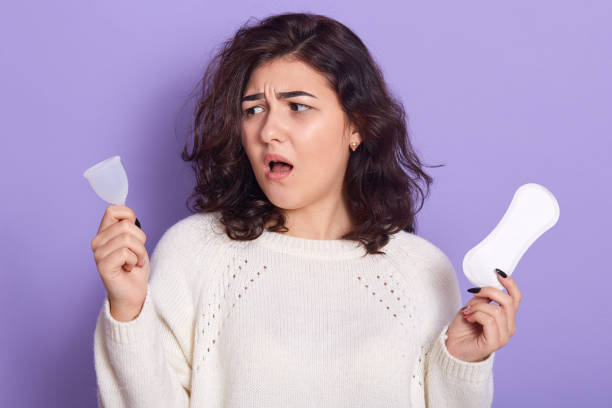Menstrual cups have gained popularity as a sustainable and convenient alternative to traditional menstrual products like pads and tampons. Understanding how menstrual cups work can help individuals make informed choices about their menstrual hygiene routine.
Introduction: Exploring Menstrual Cups
Menstrual cups are flexible, bell-shaped devices made of medical-grade silicone, rubber, or latex that are inserted into the vagina to collect menstrual fluid during menstruation. Unlike pads and tampons, which absorb menstrual flow, menstrual cups collect them, offering several benefits, such as reduced environmental impact, cost-effectiveness, and longer wear time.
Why Choose Menstrual Cups?
Menstrual cups have gained popularity for their eco-friendly design, reusability, and comfort. Additionally, they can hold more fluid than tampons and pads, making them suitable for individuals with heavy menstrual flow or those looking for extended wear options.
The Mechanics of Menstrual Cup Usage
Using a menstrual cup involves folding the cup and inserting it into the vagina, where it forms a seal against the vaginal walls, preventing leaks. The cup collects menstrual fluid until it’s time to be emptied, typically every 4 to 12 hours, depending on the individual’s flow.
Understanding How Menstrual Cups Work
Insertion:
To insert a menstrual cup, the user can fold it into a compact shape, such as a “C” or “Punch Down” fold, making it easier to insert. Once inserted, the cup opens up and forms a seal against the vaginal walls, creating a barrier to prevent leakage.
Collection:
As menstrual fluid is expelled from the uterus, it flows into the cup and is collected inside. The cup can hold significantly more fluid than tampons or pads, reducing the frequency of changes required during the day.
Removal:
To remove the cup, the user gently pinches the base to release the seal, then pulls it out while keeping it upright to avoid spillage. The collected fluid can be emptied into the toilet, rinsed if necessary, and reinserted for continued use.
Tips for Using Menstrual Cups Effectively
Find the Right Fit:
Choosing the correct size and shape of a menstrual cup is essential for comfort and effectiveness. Cups come in various sizes to accommodate different anatomies and flow levels, so individuals may need to experiment to find the right fit.
Practice Makes Perfect:
Inserting and removing a menstrual cup may take some practice, especially for first-time users. Taking the time to familiarize oneself with the process and finding a folding technique that works best can help improve confidence and comfort.
Maintain Proper Hygiene:
To prevent infections and maintain optimal hygiene, it’s essential to wash hands thoroughly before handling the cup and to sterilize it between menstrual cycles. Cups can be boiled in water or cleaned with special menstrual cup wipes or cleaners.
Conclusion: Embracing Menstrual Cups for Sustainable Menstrual Care
In conclusion, menstrual cups offer a sustainable, cost-effective, and comfortable alternative to traditional menstrual products. By understanding how menstrual cups work and following proper usage and hygiene guidelines, individuals can enjoy the freedom and convenience that menstrual cups provide while minimizing their environmental impact.
1. Can you feel a menstrual cup when it’s inserted?
When inserted correctly, menstrual cups should be comfortable and virtually undetectable. If the cup is properly positioned and forms a seal, users should not feel any sensation.
2. How long can you wear a menstrual cup before emptying it?
Menstrual cups can typically be worn for up to 12 hours before needing to be emptied, depending on the individual’s flow. However, it’s recommended to open the cup more frequently on heavier flow days.
3. Are menstrual cups safe to use?
Yes, menstrual cups are considered safe when used correctly and maintained properly. However, individuals with certain medical conditions or sensitivities should consult with a healthcare provider before using a menstrual cup.
4. Can you use a menstrual cup if you have an IUD?
While it’s generally safe to use a menstrual cup with an IUD, individuals should take care when inserting and removing the cup to avoid dislodging the IUD. Consulting with a healthcare provider is recommended.
5. Can you swim or exercise while wearing a menstrual cup?
Yes, menstrual cups are suitable for swimming and physical activity, as they form a secure seal and can hold more fluid than tampons or pads.

